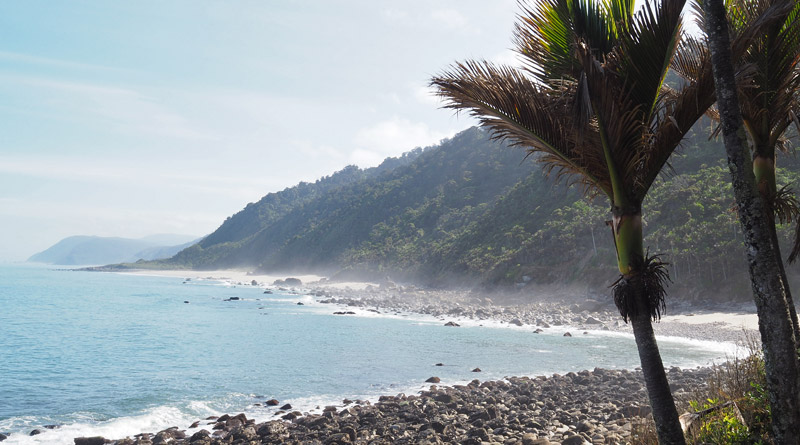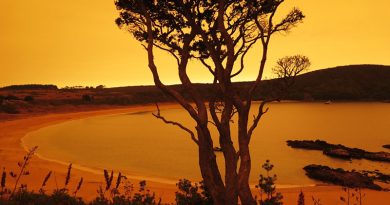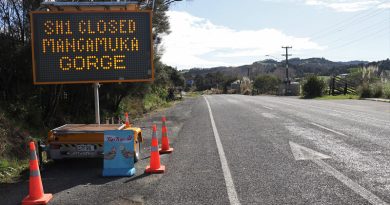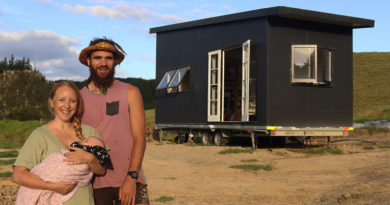Takahē and naked trampers on the Heaphy Track
Something was rustling suspiciously in the tussock.
It was too big for a rat but too small to be a pig. And it wasn’t yet dusk so it couldn’t be a kiwi.
There was one other possibility but it seemed far-fetched.
I’d heard there were takahē in the area — a flightless, mountain-dwelling bird considered extinct for more than half a century until rediscovered in a remote valley in 1948 — but surely they’d be hiding deep in the bush, not hanging around a busy tramping hut.
There are only 370 or so takahē on the planet so the chances of bumping into one are slim, or so I thought.
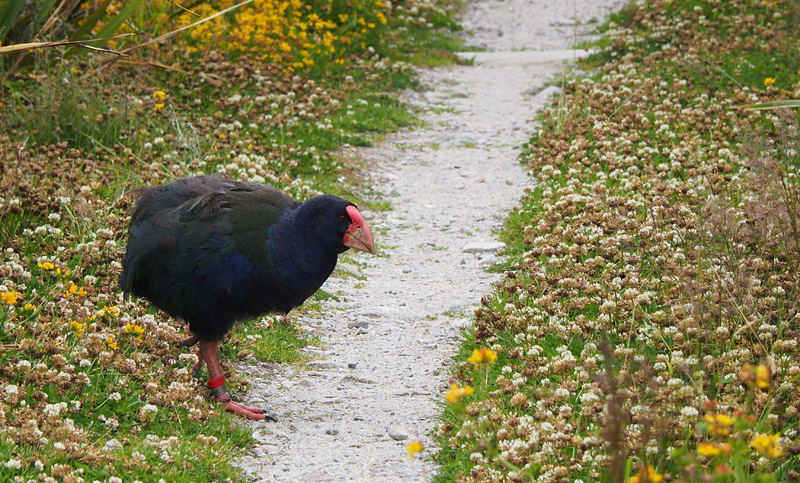
I was still contemplating this when the mystery creature announced itself with a gentle honk and poked its head out of a clump of tussock.
It was about the size of a small turkey with iridescent blue-green feathers, a stubby beak and a bony red plate atop its head. It looked like some kind of Jurassic chicken, or maybe a pukeko on steroids.
The takahē looked at me, honked again, and went back to pulling up tussock shoots for its dinner.
· · · · ·
An almost guaranteed sighting of one of the world’s rarest birds is one of the attractions of the Heaphy Track, in Kahurangi National Park at the top of the South Island.
At 78km the Heaphy is the longest of New Zealand’s 10 Great Walks but it isn’t the most spectacular. It lacks the Alpine grandeur of the Routeburn or the Milford, the stupendous views of the Kepler and the steaming volcanoes of the Tongariro Circuit.
What its does have is the greatest range of natural environments of any Great Walk. Every day you’ll find yourself in an entirely different ecosystem, from podocarp forests and open tussock lands to moss-clad beech forests and — best of all, if you ask me — the nikau forest that clings to the rugged West Coast.

You’ll see takahē, weka and, if you’re lucky, giant carnivorous snails, while you’ll have the buzz of walking from one side of the island to another, starting in sunny Golden Bay and ending on the wild, rain-lashed West Coast.
The Heaphy’s lack of immediate sex appeal also means it’s less crowded than the other Great Walks. During the day you’ll feel like you have the track to yourself while in the evenings you’ll enjoy companionship in the huts.
The Heaphy can be walked in either direction but I opted to go north to south. That way I got the climbing out of the way on the first day and saved the best scenery for last.
| Heaphy Track highlights
• Hanging out with takahē, one of the world’s rarest birds. |
Like all Great Walks, the Heaphy has to be booked in advance. I expected it would take me all day to get to the trailhead but it proved surprisingly easy (see the Practicalities section below for transport tips), so I arrived at Brown Hut, my first night’s accommodation, hours earlier than planned.
That meant I’d have to hang around at the hut, just a few hundred metres from the start of the track, when I’d much rather be walking.
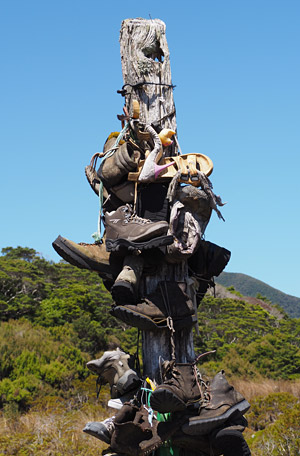
I was wondering how to pass the next six hours when Toni breezed in to clean the hut toilets. Toni ditched a high-flying career in corporate finance and is now a DOC ranger and walking encyclopedia of local wildlife. She’s also extraordinarily helpful and brimming with enthusiasm.
Toni listened to my dilemma then radioed ahead to the next hut, found a spare bunk, and changed my bookings for the next two nights. [Note to DOC: Give that ranger a raise. She’s worth it.]
The first four hours of the Heaphy are an unrelenting climb. It was hot and my pack was stupidly heavy because I’d planned to eat all my weighty food at Brown Hut.
I couldn’t complain, however, because it is possibly the gentlest ascent you’ll find in New Zealand, the track zig-zagging up the flanks of a mountain on a perfectly steady gradient.
That’s because the Heaphy Track used to be a road for miners heading to the West Coast in the gold rush of the 1860s.
Centuries earlier the same route was used by Māori travelling from Golden Bay to the mouth of the Whakapoai River, later renamed the Heaphy, in search of pounamu or greenstone.
The gold rush was short-lived and the road soon became overgrown. It was cleared by Northwest Nelson Forest Park rangers in 1965, the start of the Heaphy Track as a public walkway.
A proposal to build a road from Collingwood to Karamea, more or less along the route of the Heaphy, is revived every few years, most recently in the local elections of 2016. Fortunately, however, bulldozing a road through a national park would require a law change that has little chance of ever getting through Parliament.
· · · · ·
After a four-hour uphill slog and a short detour to highest point on the Heaphy (a mere 915m), the track levels off for the last half hour to Perry Saddle Hut, which nestles in the bush in a low saddle.
Like most huts on the Heaphy Track it’s only a few years old — this one was built in 2012 — so it’s spacious and comfortable.
As I’ve already mentioned I’d only just put my pack down and started exploring when I heard a takahē fossicking in the tussock nest to the hut.
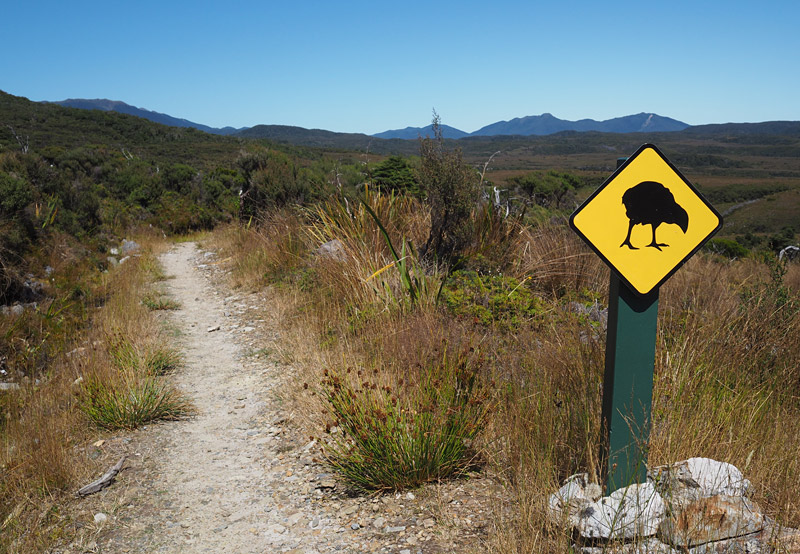
When rediscovered in 1948 the world’s entire takahē population clung to survival in a single valley in Fiordland’s Murchison Mountains. After years of protection and captive breeding numbers grew to the point where, in 2018, 30 takahē could be translocated to Gouland Downs in Kahurangi National Park. From there a few made their way cross-country to Perry Saddle Hut.
They’re large birds, weighing up to 4kg, and seem to spend most of their time wandering around amiably in pairs, honking gently to each other and using their beaks to strip the tough outer layers from tussock stems, their staple food.
I was very excited to see my first takahē but after a few days I’d seen so many I stopped taking out my camera or pointing them out urgently to anyone who’d listen.
They seem to gravitate to huts where the grass is green and tender, a change from the tough-as-boots tussock they’re used to.
With a diet low in nutritional value takahē have to eat a huge amount every day to survive. That results in a huge amount of poo, which is excreted in cigar-shaped turds totaling 7-9 metres a day. Dark green poo means they’ve been feasting on hut grass; fibrous, pale brown poo shows they’ve been munching on tussock.
· · · · ·
By changing my bookings Toni had effectively given me an extra day on the track. That meant I could take a side trip the next morning up Mt Perry (1238m), where a rocky scramble was rewarded with views across Golden Bay and as far as Mt Taranaki, which looked like a mere pimple on the horizon.
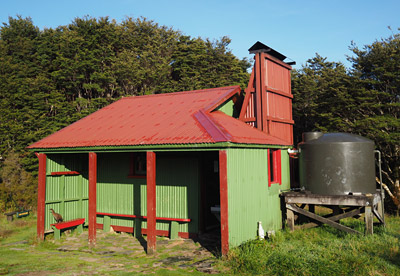
I also had to walk just an hour and half to the next hut across the open tussock lands of Gouland Downs, an undulating plateau crossed by tannin-stained streams. The most famous landmark on this part of the track is the Boot Pole, where past trampers have hung up boots which didn’t survive the rigours of the trail. Mysteriously, footwear on display includes a pair of pink stilettos.
Gouland Downs Hut is an old-school, corrugated-iron affair with eight bunks in a single room, a fireplace and a resident weka which spends most of its time chasing away other weka intruding on its territory. In contrast to the bigger huts, only one other person, a young Frenchman, was staying the night.
My reason for wanting some extra time at Gouland Downs was the nearby “Enchanted Forest”. This small patch of beech forest, draped in thick moss and beard-like lichens, hides a labyrinth of caves, sinkholes and arches. The caves aren’t signposted but every faint side trail or pile of stones leads to another geological wonder.
There are caves you can walk through from end to end, seemingly bottomless sinkholes and chasms (careful where you tread!) and streams that pop out of ground then vanish just as suddenly. On the edge of the forest I found a cave halfway up a limestone cliff with a stream tumbling from its lip. It made a fabulous, if freezing, shower.
· · · · ·
The great talking point of day three was The Naked Tramper.
I met him during a lunch break at Saxon Hut, while I was trying to defend my food from a kleptomaniac weka. He was, judging by his accent, American, and he was basketballer-tall. He was rippling with muscle and dressed only in tatty shorts and sandals with wild hair tied back in a ponytail.
He talked about planning to walk through the night and said he’d already hiked from Brown Hut that day, so he’d been moving at an extraordinary pace.
Some time later he must have dispensed with the shorts because every group I met from the other direction warned me, in shocked tones, about a naked tramper ahead. The more prudish walkers were genuinely perturbed while others were just amused.
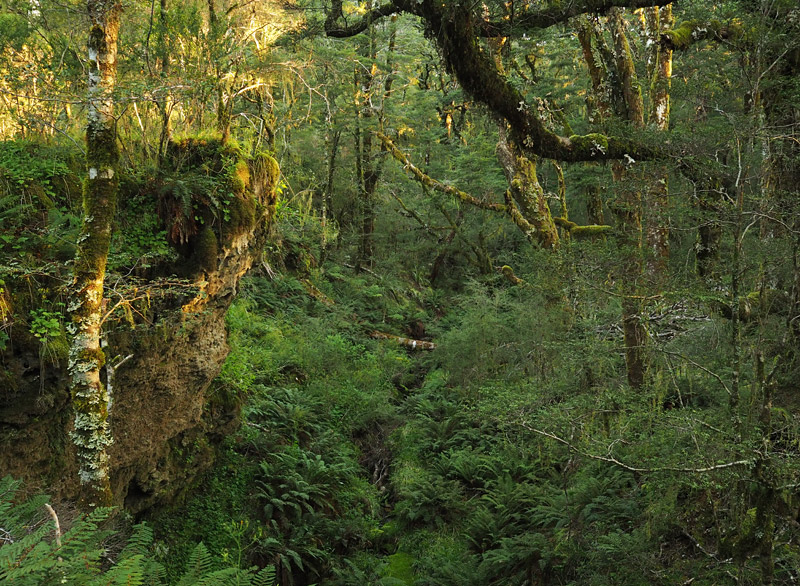
The best reaction was from a lady of about 65 who told me she’d been crouching to photograph a diminutive plant just as he strode past, so her face was precisely at The Naked Tramper’s groin level.
“Good day,” The Naked Tramper said.
“It is now,” she replied.
Eventually open tussock gave way to stunted beech forest and wetlands crossed by boardwalks. Takahē wandered nonchalantly across the track and a group of granite outcrops dubbed The Elephants really did look like elephants coming down to the stream to bathe.
I spent that night at another near-new hut, James Mackay Hut, with 28 bunks and even flush toilets, an unheard-of luxury in the backcountry. Its large deck offered a first peek of the coast and the Heaphy River mouth far below.
· · · · ·
After James Mackay Hut the forest changed again, thanks no doubt to the mist and rain forever rolling in from the Tasman Sea. It was cool, mossy and intensely green, and eerily silent but for the inquisitive South Island robins that flutter around your feet any time you stop.
Here the bush even smelt differently and at one point the track crossed an exposed seam of coal.
As the track neared sea level the bush changed again, to podocarp forest dominated by towering rimu trees. Sounds returned as the Heaphy River appeared below, with the rushing of water joined by the din of cicada calls. I stopped at Lewis Hut but abandoned plans for lunch on the balcony in seconds due to an ambush of ferocious sandflies.
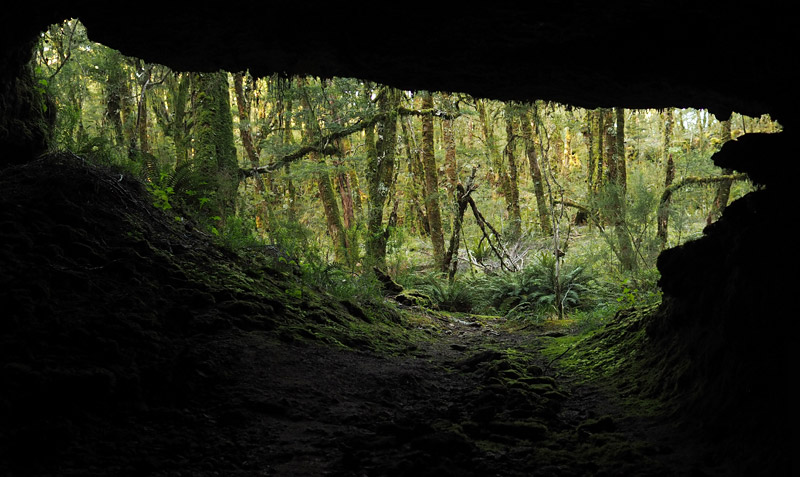
The final two hours to Heaphy Hut followed the river past giant rātā trees — each starts life as a parasitic vine, then strangles its host and swells to as much as 12 metres in circumference — and through a cacophony of tūī so loud I wondered if it was what New Zealand forests sounded like before humans arrived with their plagues of rats and stoats. Meanwhile, on the track, oblivious to trampers, weka darted about and engaged in noisy territorial feuds.
· · · · ·
Heaphy Hut, my last night’s last accommodation on the track, is fabulously located atop a grassy slope overlooking an estuary and a beach piled metres high with driftwood like bleached dinosaur bones. A short distance away surf pounds a beach as wild and empty as any you’ll find in New Zealand.
I had to get going early on the last day for the five-hour dash down the coast to the road end at Kohaihai. It seemed a pity to rush but the clouds of sandflies mean you can’t linger much anyway.
The track hugs the coast most of the way with waves crashing on boulders and golden beaches, all fringed by forests of nikau trees. The nikau, New Zealand’s only native palm, makes the coast look almost tropical, a contrast to the crashing, icy sea and often tempestuous weather.
In 78km of ever-changing scenery that last stretch along the coast was for me the highlight with every view more rewarding than the last. The Heaphy mightn’t have smouldering volcanoes or snowy peaks, but it has no shortage of beauty. And it’s possibly the only place on the planet you’ll be able to hang out with a takahē.
Practicalities
| The information given here was correct in February 2020 before the Covid-19 pandemic. There’s no way of knowing when, or if, tourism and public transport will return to normal. Make sure you check the current situation before planning your walk. |
At 78km the Heaphy is the longest of New Zealand’s 10 Great Walks but, thanks to the gentle topography, it’s also one of the most do-able for people of limited fitness or tramping experience.
It can be walked in either direction but my preference, and the direction described here, is to start in Golden Bay at the northern end (nearest town: Collingwood) and finish on the West Coast (nearest town: Karamea). That way you get almost all the climbing out of the way on the first day, and you spend your last day walking along a wild stretch of coast, making a fabulous finale.
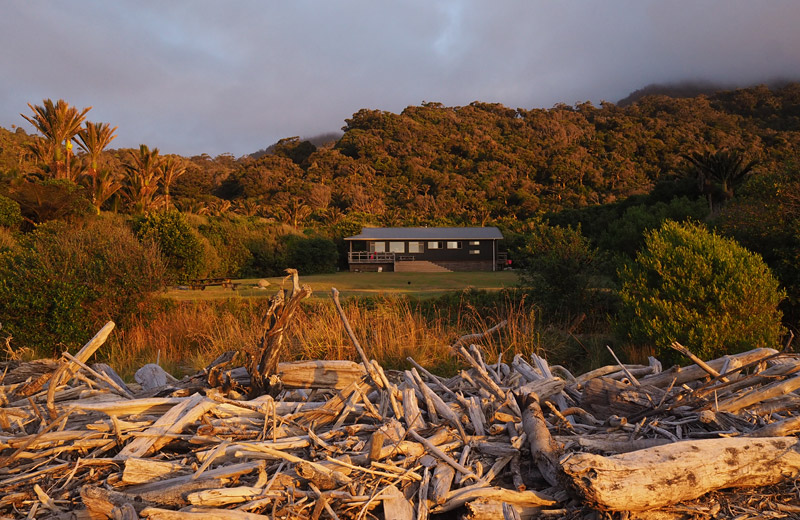
Most people walk the Heaphy in four days with three nights in Department of Conservation huts (Perry Saddle Hut, James Mackay Hut and Heaphy Hut). However, I recommend spending an extra night between Perry Saddle Hut and James Mackay Hut. That breaks up the longest day and gives you time to explore along the way. You could, for example, climb Mt Perry (1238m; the track starts just 5 minutes from Perry Saddle Hut) or spend several hours exploring the caves and karst landscape around Gouland Downs Hut. It could also mean you have some energy left to go out exploring at night in the hope of spotting a kiwi or a giant carnivorous Powelliphanta snail (like kiwi, these freaks of nature are strictly nocturnal).
If you don’t have a tent you have two options for breaking up the leg between Perry Saddle Hut and James Mackay Hut. Saxon Hut is closer to the midpoint and is more modern and comfortable, but tiny, historic Gouland Downs Hut has more character and is next to the “Enchanted Forest”, a patch of bush riddled with caves and sinkholes. The catch, if you can call it that, is that Gouland Downs Hut does not have cooking facilities. You have to cook on the fireplace or bring your own stove.
One of the great things about the Heaphy is that it gets far fewer trampers than other Great Walks. The biggest hut takes 28 people and was just half full when I walked the track in mid-summer 2020. Compare that to the Routeburn where the huts have 70 bunks and are fully booked almost every night in peak season. You’ll still need to book ahead, however. Go to the Department of Conservation website for more information.
Transport
Arranging transport is the biggest challenge of walking the Heaphy. It’s also one of the few places in New Zealand where having your own wheels can be a hindrance rather than a help — while the walk itself is 78km, by road the distance between the start and finish is 450km! That means you may have to make use of one of the vehicle relocation services where someone drives your car around and parks it at the other end. Such services include Heaphy Track Help and Trek Express. Alternatively, The Heaphy Bus runs a shuttle service twice a week from one end of the track to the other to bring you back to your car.
Public transport is simpler but most buses run just once a day so you need to plan ahead. If you’re starting from the north, a Golden Bay Coachlines bus leaves Nelson airport at 8am daily in summer with stops in Nelson, Motueka, Takaka and Collingwood, reaching Brown Hut, the start of the track, at noon. The Heaphy Bus operates a similar service, leaving Nelson at 7.30am and Takaka at 10.15am, arriving at Brown Hut at 11.30am. The Heaphy Bus also has a service from Nelson to Kohaihai if you want to walk the track in the other direction.
My flight to Nelson landed too late for the direct bus but I really like Takaka so I caught an afternoon bus there and spent an enjoyable night in New Zealand’s alternative lifestyle capital before catching a bus to Brown Hut the next morning.
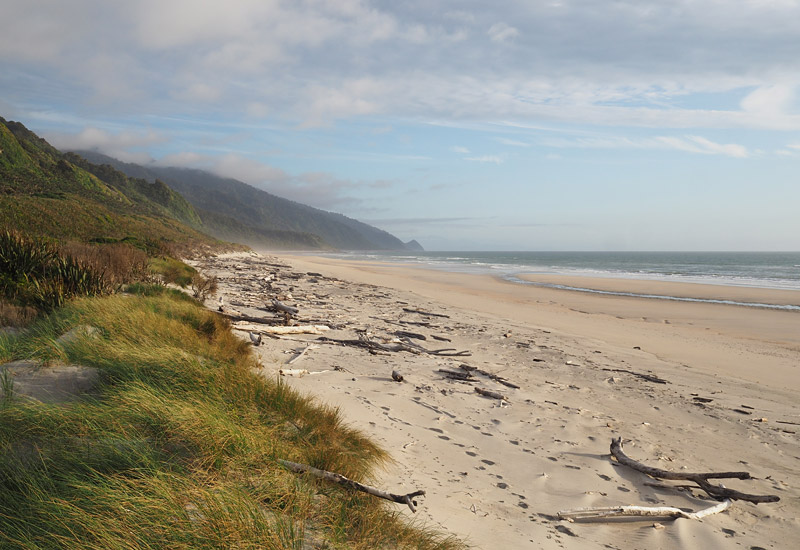
The southern end of the track, at Kohaihai, has a car park, toilets and a basic campground. The nearest town, Karamea, is 16km to the south. You could probably hitch a ride but traffic is light. In summer a minibus operated by Golden Bay Coachlines leaves Kohaihai daily at 12.45pm. It stops in Karamea (35 minutes) and Westport (2 hours) and can even take you all the way to Nelson (5½ hours). The Heaphy Bus has a similar service departing at 1.30pm.
Booking ahead is wise because the minibuses may be full or may be cancelled if no one has booked a seat. I took a chance, however, and there was plenty of room. Just bring cash if you don’t buy your ticket beforehand. The 1.30pm bus is the last one of the day so if you’re relying on public transport you’ll have to wake up and get going reasonably early on the final day.
Because the start and finish of the Heaphy are so far apart by road, if you’re travelling by public transport as part of a wider New Zealand trip you’ll end up carrying all your stuff on your back for four or five days. I met a couple who were carrying all their belongings for a year-long stay. Their packs were crazily heavy and soured their experience of the track.
If you are travelling with all your worldly possessions in your backpack I’d strongly recommend you carry only what you need on the walk and find a way to send the rest of your gear ahead. You could, for example, courier your gear to your next accommodation (check with the accommodation provider first) or send it by poste restante then collect it from the post office one you hit town. Postage costs aren’t too onerous and there’s no extra charge for storage for the first seven days. Unfortunately, post offices in Wesport and Karamea don’t offer a poste restante service, but Motueka and Takaka do if you’re walking the other way.
Staying in Karamea
Karamea has a few accommodation options and some cool stuff to see, in particular the Oparara Arches (New Zealand’s biggest limestone arches) about 25km from town. The Last Resort is nice and boasts a café/restaurant but if you’re on a budget the campground at Karamea Memorial Domain (karameamdb@gmail.com) is great value and has a good shared kitchen and lounge area (dorm beds, camping and campervan parking available). Vinnie’s Café at Market Cross, Karamea’s main junction, is the best place for a caffeine fix after several days in the bush.
If you’re carrying on to Westport, it’s a bustling metropolis for this part of the world so it has plenty of accommodation options plus a helpful information centre.
Hazards
The Heaphy is well marked, the tracks are well formed and the rivers are bridged, so as long as you are well equipped and reasonably fit, not much can go wrong. However, you need to be prepared for heavy rain at any time of year with a good-quality raincoat, at least one change of warm, dry clothing and a waterproof pack or dry bag.
You may read warnings about having to plan the last day of the walk to avoid high tide but that’s no longer the case — the track was re-routed further inland a few years ago. That said, in high tides and extreme weather there are still a few places along the coast where waves can wash over the track.
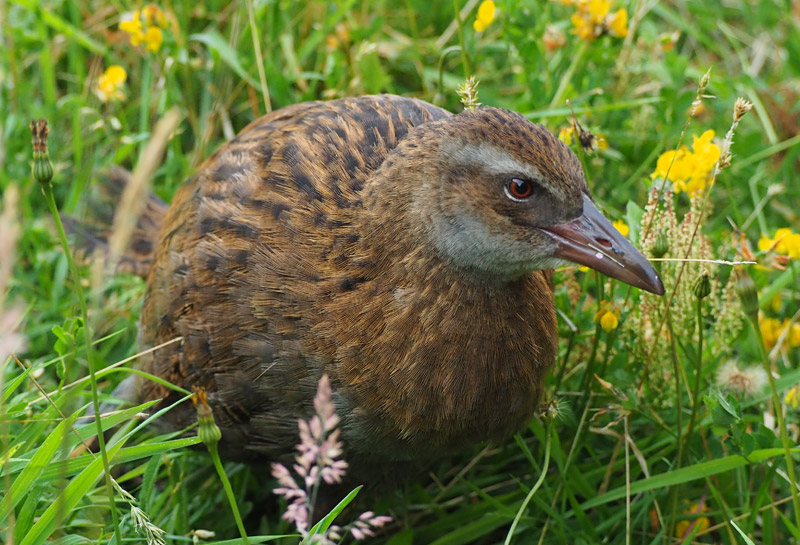
The beauty of walking in New Zealand is that wildlife is rarely a threat. I say rarely because there is one creature, especially on the South Island’s west coast, that may drive you insane. The sandfly is a small, midge-like fly that will swarm around you in vast numbers and bite any exposed flesh.
While sandflies aren’t really hazardous — their bites don’t itch like mosquito bites do and they don’t carry disease — they are incredibly numerous and persistent, to the point where stopping for a rest can be impossible. You will need to bring an effective insect repellent and in bad areas (such as around Lewis Hut and the Heaphy River mouth) you may have to wear long sleeves and trousers. They don’t bite as long as you are moving and they can’t fly in strong winds, so you may find respite in exposed, windy areas.
Fortunately all huts are fitted with insect screens; the newer huts even have double doors to keep warmth in and sandlfies out. If you are camping your tent must have mesh on the doors and vents to keep the bastards out.
The official sandfly advice from New Zealand’s Ministry of Health offers some good tips while this news report suggests, not entirely seriously, protecting yourself by smothering yourself in Dettol and baby oil, eating garlic and carrying a penguin as sandfly bait.
When to go
Thanks to its relatively low elevation the Heaphy can be walked at any time of year. It is open to mountainbikers from May 1 to November 30. Summer (December to February) is the best time for maximum daylight hours and warmth, but it’s also the busiest by a long way. Late summer generally has the most reliable weather but be prepared for rain at any time, especially on the west coast.
More useful links
DOC’s handy list of stuff to bring
The official Heaphy Track brochure (PDF, 3.3MB)
The official Heaphy Track walking guide (PDF, 1.6MB)
You can download free topographic maps from the Land Information New Zealand website. You’ll need the 1:50,000 scale maps; the 1:250,000 versions don’t have enough detail.
For more stories about walking in New Zealand, check out Paparoa Track: NZ’s newest Great Walk, Braving New Zealand’s Old Ghost Road and Te Paki: New Zealand’s top hike.

